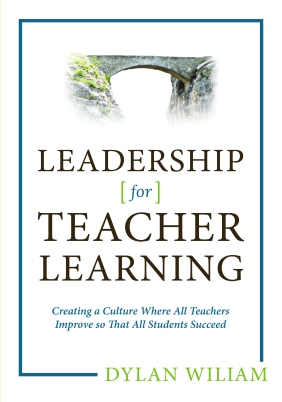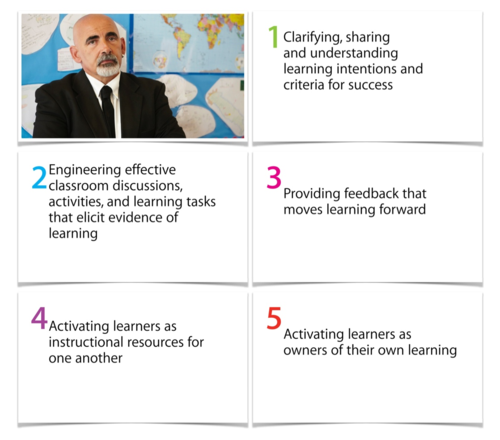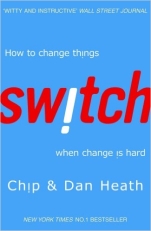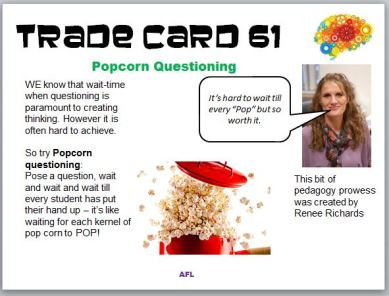This series of blogs “Leading Teacher Learning: The importance of …” will give a short introduction and overview of the work of people who have helped me in my job leading teaching and learning. This series is purely a personal account of my “go to” people who have given me inspiration and insights into how to develop mine and others teaching.
This series is not intended to be a comprehensive account of any ones work and any omissions or misinterpretations are my own. I would strongly recommend any teacher or senior leader who is developing teaching to study the original sources.
In this series I will share the ways in which Dylan Wiliam, John Hattie , Andy Hargreaves ,Michael Fullen , David Didau and Alistair Smith have helped me as a teacher and as a deputy head leading the development of teaching and learning. This is not a critique , rather a purely positive personal view.
Dylan Wiliam
I started my teacher training not long after the publication of that little pamphlet by Black and Wiliam inside the black box. The impact of Black and Wiliams work on a young teacher cannot be underestimated. Understanding how to use assessment Formatively has become a bedrock of effective teaching.
Dylan Wiliam for me is the master at communicating the complex. He manages to summarise the complex into common sense, and make you scratch your head and say ” So simple, why didn’t I think of it like that before” Consider some of the quotes below:
” Feedback should be more work for the recipient than the donor”
“As soon as students get a grade, the learning stops. We may not like it, but the research reviewed here shows that this is a relatively stable feature of how human minds work.”
“The whole purpose of feedback should be to increase the extent to which students are owners of their own learning,”
“A bad curriculum well taught is invariably a better experience for students than a good curriculum badly taught: pedagogy trumps curriculum. Or more precisely, pedagogy is curriculum, because what matters is how things are taught, rather than what is taught.”
If you haven’t been to a Dylan Wiliam conference or talk I’d recommend that you do. Take a note pad and you will be scribbling and thinking. You will leave possibly with more questions than answers but you will also have a number of practical “use tomorrow” techniques that can improve your teaching and the learning of students in your classroom. Not to mention share with staff!
If you can’t get on a conference (and they do sell out quickly) there is the original “Inside” and “Working Inside the Black Box” that are still available and are easy to read, if now slightly dated. My two “go-to” books from Wiliam are:


In essence what Wiliam argues is that teachers and schools should focus specifically on developing aspects of how they use formative assessment in order to improve learning and achievement. Seems simple. But it isn’t. As Wiliam constantly points out changing practice is hard, really hard. Everyone knows this, as a teacher have you ever tried to change your habits in the classroom? Something as simple as taking the register at the very start of the lesson (when you normally take it ten or fifteen minutes in) is incredibly difficult (and yet seems so simple). This simple task is difficult to accomplish in the face of habits, therefore improving something complex such as formative assessment is even more difficult. But worth it. But difficult.
Wiliam argues that in order to maximise the benefits of formative assessment teachers should attempt to do and improve (constantly) the quality of the following:

Wiliam also suggest that these are not always easy, and that time and deliberate effort (and practice) are crucial if these are going to be successful. Taking much inspiration from:

Wiliam shows how difficult change is, and that at the heart of improving teaching is the need to change.
This makes sense, but of course in busy environments faced with top down directives teachers and school leaders rarely take time to “sharpen the saw ”
(See this: When teachers stop learning so do students: TKAT’s Advanced Pedagogy Network. for some ideas on how to sharpen the saw)
Take for example improving and “sharpening” number 1: Clarifying, sharing and understanding learning intentions and criteria for success. This on the surface looks reasonably achievable. But setting appropriate, thinking eliciting questions is an art form and a science. As outlined in a previous blog : Debden Minds 1: The importance of Learning Objectives (Yes, Yes we’ve heard it all before) crafting great questions takes time. Ensuring that students have understood them even more time and expertise. Creating effective success criteria rubrics (and keeping them up to date) is a huge task.
Improving and honing all of the 5 ways to improve teaching and learning and enhance formative assessment are huge. Wiliam suggests a number of ways that this could be done, and points out the research in education and other fields which support his views. In a nutshell as a teacher you have to be acutely aware of what you are trying to improve and what success looks like, and you need support in this. An example of this support that Wiliam highlights is Teaching and Learning Communities, which, when run well can be incredibly effective.
Highly structured meetings where timings are given for discussion about current practice then new (teacher) learning and finally planning and evaluation are crucial. This format is the basis of the Debden Minds and Debden Beacons (Debden Minds: Developing the Research. Habits are everything; scaling up the BIG FOUR) where meetings are focused and based on teaching and planning.
Wiliam in all of his talks and books mixes complex and diverse research, nuanced arguments with practical strategies and techniques that can be used in the classroom. I will often go back to the “Classroom experiment” which reminds me of some great techniques that I “use” to use and which were really great. A return to the “lolly sticks” during a staff training session reminded me of the power of explicitly randomising who I asked as a way of keeping people on their toes, increasing engagement and improving classroom dialogue.
The Classroom experiment, undertaken in a real school highlights the challenges of changing practice. Wiliam uses strategies with teachers to aid them in improving their use of formative assessment, and help them change their habits.
Alongside Teaching and Learning Communities it is crucial that teachers are provided with strategies which they can use immediately and which are aligned to formative assessment and the things which will have the greatest impact on learning and achievement. Partially as a result of reading, watching and listening to Wiliam I created the “Trade Cards”. Realising that teachers although having a glut of ideas and strategies available to them these ideas and strategies are buried in books and websites rather than being “live”. As such sustained change in practice is less likely.
The Trade Cards are an attempt (DEBDEN MINDS : Trade Cards; more than just a pile of good ideas.) to increase dialogue about developing teaching between teachers and to give teachers prompts to changing their habits. Books and conferences are great as inspiration but when things get busy a “Trade Card” handed to a teacher or stuck on their computer is more likely to sustain change. (Trade Card Combo27,37,49,47. The old classic AFL)

The work of Dylan Wiliam is a constant supply of inspiration to me. If you are a teacher or leader within a school and haven’t explored his ideas, you should.
If you think you know about formative assessment and the work of Wiliam, go and have another read…